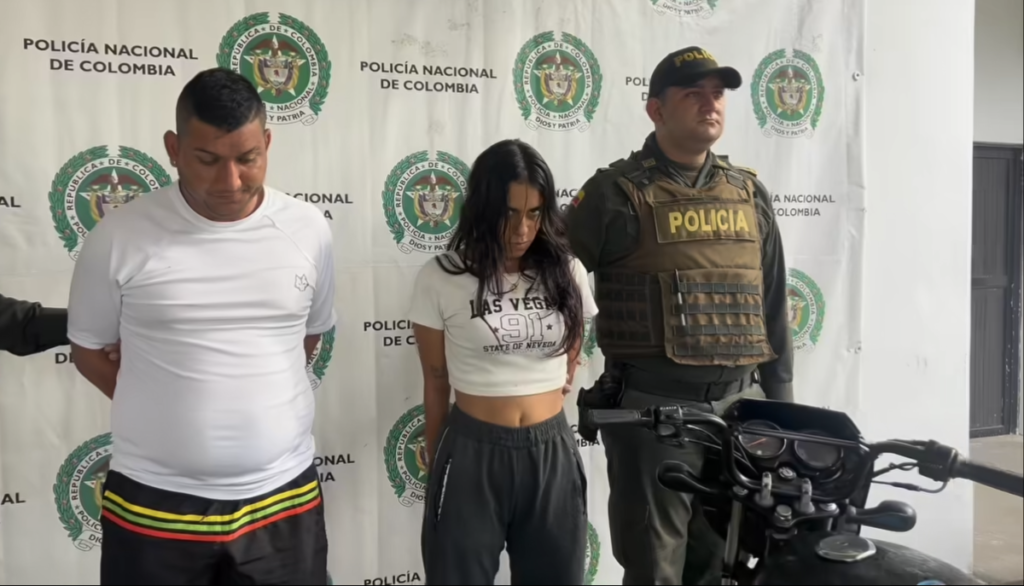In a significant development in Colombia’s ongoing battle against organized crime, local police have announced the arrest of a woman known as “The Doll,” identified as 22-year-old Karen Juliet Ojeda Rodríguez. This high-profile arrest occurred in the Magdalena Medio region and is tied to her alleged role as a hitwoman for a criminal gang called “Los de la M,” which has been involved in multiple homicides linked to drug trafficking disputes. The police released a video on social media showcasing the apprehension of Ojeda Rodríguez along with a male accomplice known by the alias “Leopoldo.” They were arrested while in possession of a 9mm handgun that is currently undergoing ballistic testing to ascertain its connection to various violent crimes in Barrancabermeja, marking a critical step in law enforcement’s efforts to curb murder rates in the area.
Lieutenant Colonel Mauricio Herrera emphasized the importance of these arrests in the fight against the surge in violent crime, particularly homicides. The Los de la M gang operates in a volatile northern region of Santander, where different criminal factions vie for control over drug trafficking routes and territory. This power struggle has resulted in high levels of violence, and Ojeda Rodríguez is reported to have entered the criminal world at the young age of 18. By the time of her arrest, she was positioned as the second-in-command within her gang and was responsible for orchestrating targeted assassinations. Her criminal activities reportedly include killing her own ex-partner, who was known as “Orejas” or “Ears.”
Local news outlet Diario del Norte covered the story in detail, revealing the deep-seated issues plaguing Barrancabermeja, a city that has witnessed over 120 murders this year alone. This region has emerged as a hotspot for drug-related violence, fueled by the competing interests of different criminal organizations. The arrest of “La Muñeca” sheds light on the extent of female involvement in the ranks of organized crime, a phenomenon that defies traditional gender roles and indicates a complex and evolving landscape of criminal activity in Colombia.
The police have been ramping up their efforts to combat the escalating wave of violence, and the arrest of Ojeda Rodríguez is seen as a critical move in dismantling the operational structure of Los de la M. Authorities are focusing on both arresting individuals directly involved in violent acts, as well as targeting the leadership of these gangs in hopes of destabilizing their operations. The confiscated firearm will provide critical evidence for ongoing investigations, and police have promised that further action will follow as they continue to explore connections between suspects and unsolved crimes.
Media coverage of the arrest has sparked discussions about the role of women in organized crime, where individuals like Ojeda Rodríguez show that female participants are increasingly taking on leadership and violent roles traditionally associated with men. The nuances of these roles reveal a shifting dynamic within criminal organizations, with women sometimes leading operations that involve significant risk and lethality. This trend complicates law enforcement’s approach to dealing with gang violence and may necessitate new strategies and perspectives in tackling crime in Colombia.
As police continue their work in the region, the ongoing violence in Barrancabermeja underlines the urgency for comprehensive approaches to not only apprehend high-profile criminals but also address the root causes of gang violence and the drug trade. The case of “The Doll” reflects broader societal issues, including poverty, lack of opportunity, and systemic issues that push individuals toward crime. The Colombian government, alongside law enforcement agencies, faces the challenge of balancing immediate security responses with long-term strategies that could lead to sustainable peace and security in these conflict-ridden areas.

